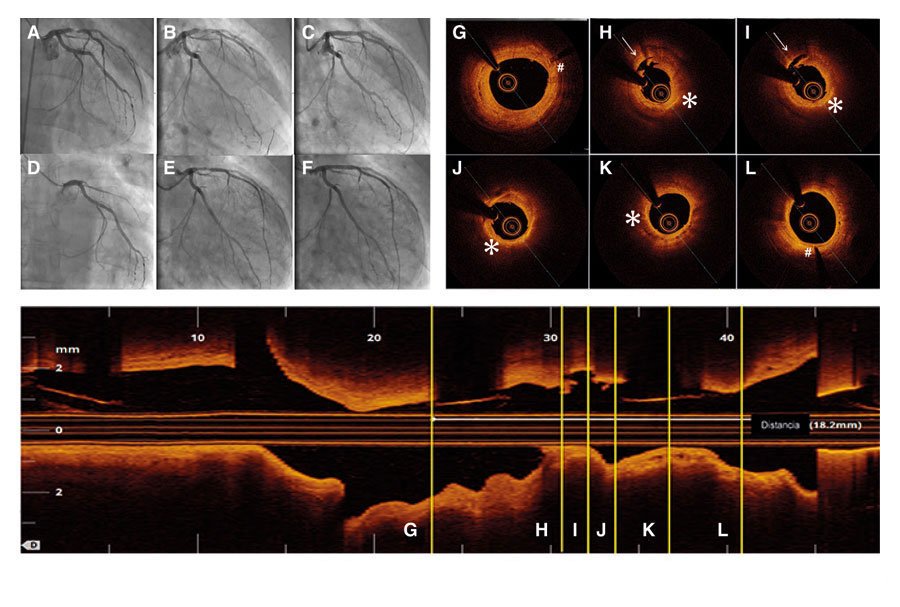Sixty-four year-old male patient with ST-segment elevation acute myocardial infarction due to occlusion of his anterior descending artery who received one 3 × 18 mm direct bioresorbable vascular scaffold (BVS) (figure 1A-C). Then he received acetylsalicylic acid and atorvastatin.
Fifty-two months later he experienced an anterior reinfarction due to the occlusion of the same segment of the anterior descending artery. Thrombo-aspiration with flow recovery (figure 1D-E) was conducted and the optical coherence tomography showed strut remnants almost indistinguishable in the BVS segment. Thrombosis was attributed to a tear in the neoatherosclerotic lipid plaque (figura 1H-I, video of the supplementary data). Figures figura 1G-L show the BVS markers (pound sign) and the presence of the aforementioned torn lipid plaque (asterisk and arrow, respectively). One drug-eluting metallic stent was implanted inside the stent (figura 1F).
Figure 1.
The primary goal of BVSs is to eliminate the risk of very late thrombosis once the device is gone. In several series of very late thromboses in drug-eluting metallic stents, one of the main causes seen in the optical coherence tomography is the tear of the neoatherosclerotic lipid-laden plaque (26% to 31%). Therefore, we should expect a significant drop in stent thrombosis when the BVS process of resorption is complete. However, the restoration of geometry and the arterial vessel-motricity may promote neoatherosclerosis in patients with BVS. As far as we know, this is the very first case of ST-segment elevation acute myocardial infarction induced by a neoatherosclerotic plaque tear 4 years after BVS implantation.
Supplementary data
Video 1. Muntané-Carol G. DOI: 10.24875/RECICE.M19000018















